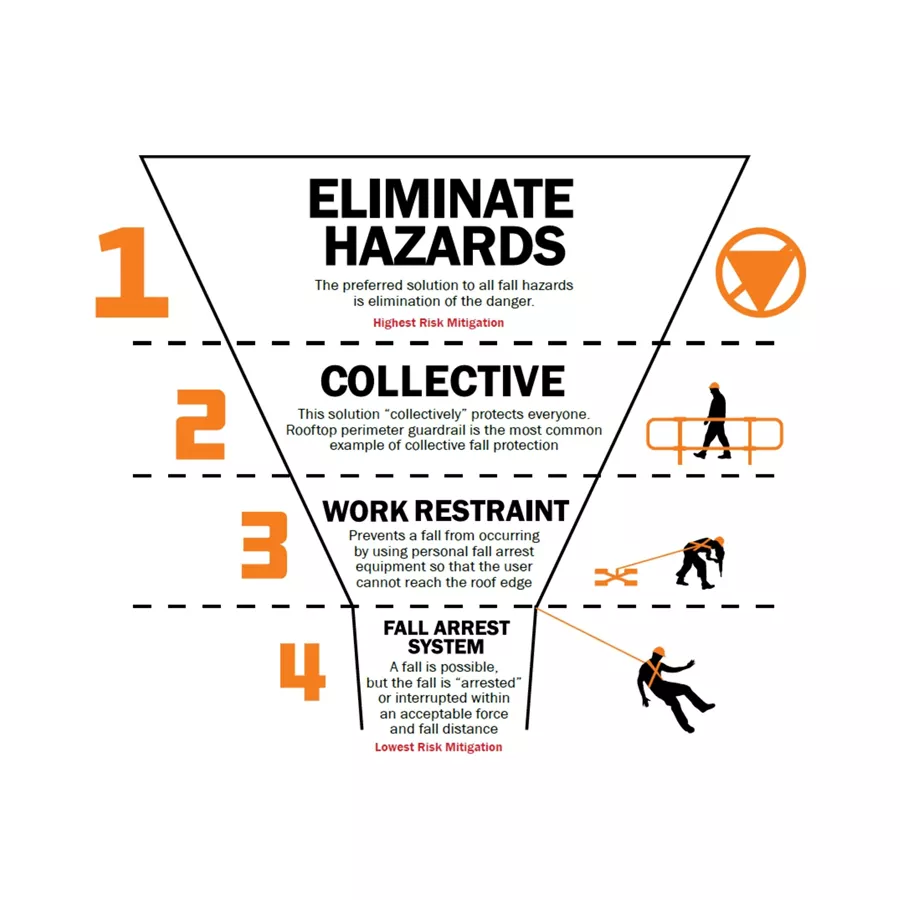
You are visiting the Canada Kee Safety website from United States. Would you like to go to the United States site?

Frozen peas, canned soup, diet soda, ground beef, hummus, pasta, cranberry juice, ice cream sandwiches, shredded cheese, fish sticks, lemonade, instant oatmeal…the list of processed foods and beverages featured on grocery shelves is innumerable.
The food processing plants producing this abundance are diverse and complex facilities with large, proficient equipment. From the ground floor to building services equipment on the rooftop, these systems often involve elevated areas, machinery, and hazardous zones where workers risk falling and injuring themselves.
Recognizing where fall protection equipment is needed, implementing effective measures, and providing certified training will help keep the workers safe and the supermarkets stocked.

Mixing Tanks & Processing Vessels – require workers to access heights for inspection, cleaning, and maintenance.
Conveyor Systems – are often elevated to optimize space utilization and will need workers at height for loading, unloading, and maintenance.
Packaging & Bottling Lines – include sorters, fillers, labelers, and other machinery that need to be accessed for cleaning and troubleshooting.
Freezers & Cold Storage Units – have products stored on high shelves or racks that need to be accessed for inventory management.
Heating, Ventilation & Air Conditioning (HVAC) Systems – are often located on the rooftop, exposing maintenance workers to extreme hazards.
Loading Docks & Palletizing Areas – pose fall risks and endanger workers and the facility because of forklifts.
Catwalks – are used to oversee operations, inspect machinery, and transport materials.
Ladders & Staircases – if unsecured, create slip and fall hazards.
Storage Tanks & Silos – that contain ingredients or process materials and need to be accessed for filling, inspection, and maintenance.

Pipe-fitted guardrail systems provide versatile and regulatory-compliant fall protection throughout a food and beverage processing plant.
Hot-dipped galvanized steel or anodized aluminum railings are strong, durable, and corrosion-resistant. Their modular design enables easy installation or reconfiguration without welding or drilling.
Guardrails belong on elevated catwalks and walkways, at loading docks, and on platforms for accessing tanks, vessels, conveyors, silos, and elevated equipment. Safety railings can also restrict access to dangerous machinery, hazardous zones, and pedestrian-only areas. A self-closing gate has a spring-loaded mechanism that automatically closes behind the worker passing through the railing system to keep the area secure.

Work access platforms feature anti-slip, non-bounce, self-draining treads for stairs and platform decks. The treads are secured to pipe-fitted frames that provide robust stability. Guardrails offer added fall protection. Platforms are safer and more efficient than ladders, enabling workers to use both hands and have less restricted movement.
Their modular design allows the platform to be designed and fitted to the workspace, whether large processing equipment, storage areas, tanks, vessels, silos, conveyors, or other elevated and hard-to-reach areas.
Static (fixed) platforms are ideal for permanent installation and where tasks are performed frequently.
Mobile platforms have heavy-duty locking casters for station-to-station portability.
Work platforms can be customized with storage racks and shelves and equipped with shop services (e.g., water, air, electrical).

With floor space at a premium, mezzanines provide valuable storage and operating space. For loading and unloading pallets, a pivoting pallet gate integrates seamlessly into a guardrail system or other barrier, offering fall protection for mezzanine workers. It also facilitates the safe movement of products and materials between levels by forklift.
Pallet gates, which can be aluminum or galvanized steel, are available in four configurations. They can be installed quickly and easily without welding and have few moving parts, thus requiring minimal maintenance.

A fast-paced food and beverage processing plant will have forklifts whirling around to keep up with the pace of materials management, production, and deliveries. Traffic safety barriers are needed to safeguard people and expensive capital equipment, racks, loading dock doors, products, and the building itself. They feature heavy-duty construction, are powder-coated in “high-visibility” yellow, and are easily adaptable to the area that needs to be shielded.

HVAC equipment, solar panels, electrical systems, and other apparatus located on the rooftop require monitoring, inspections, and maintenance. Repairs are also expected, as they are exposed to harsh conditions. Fortunately, several types of fall protection systems are available.

Food and beverage processing plants present unique challenges for worker safety. Since the employers of these plants are considered essential workers, it is essential that regulatory-compliant fall protection systems and equipment are backed by certified training for the workers.
Covers relevant legislation, legal responsibilities, and the inspection, installation, and use of equipment for working at height.
Develops individuals to examine personal fall arrest equipment thoroughly, create a management recording system, and perform other supervisory duties.
Comprehensive training in the use selection, pre-check, and use of the proper work restraint and fall arrest equipment

A truly comprehensive rooftop solution follows the Hierarchy of Fall Protection. An expert starts by inspecting the roof site for potential fall hazards. From there, a complete system solution and recommendations are created that descend down the four levels of the hierarchy, from simple, sensible approaches for eliminating risks all the way down to lifesaving personal protection systems.
Collective Systems require no additional training to use. Fall Restraint and Fall Arrest Systems both require a high level of user competency, training and additional inspection to be used properly.